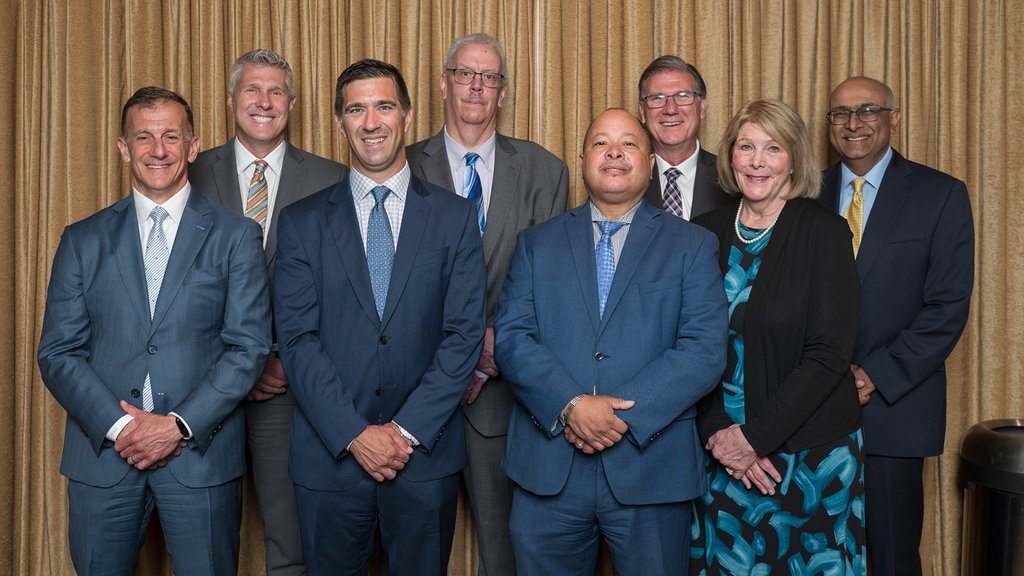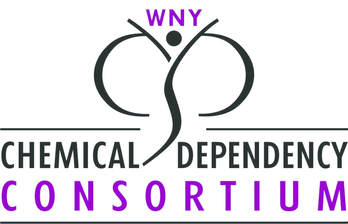The innovation and creativity that lead to the quality provided by area health-care organizations have persisted despite the trials around funding, recruitment and retention, technology and other realities of the industry.
Buffalo Business First Publisher John Tebeau gathered leaders from the region’s top health organizations to talk about how they have weathered the recent past and their plans for the future.
Joining the conversation were:
- Dr. Michael Edbauer, president, Highmark Blue Cross Blue Shield of Western New York.
- Joseph Fritz, CEO, Dent Neurologic Institute.
- Raymond Ganoe, president and CEO, Evergreen Health.
- Jeffrey Johns, marketing and communications director, Buffalo Medical Group.
- Dr. Michael Mineo, chief medical officer, Kaleida Health.
- Michael Osborne, new business development president, Catholic Health.
- Dr. Raghu Ram, vice president of Value-Based Programs, Roswell Park Comprehensive Cancer Center.
- Cindy Voelker, president and CEO, Spectrum Health & Human Services.
Beyond the walls
The trend to expand health services out of the hospitals into communities and cyberspace and over the phone was accelerated during the pandemic and will only continue as accessibility becomes a hallmark for providers.
The panelists had several current and future examples from their own organization.
Kaleida Health invested in three community-based surgery centers in Amherst, Cheektowaga and Orchard Park, Mineo said.
Roswell Park has two off-campus facilities opening in the fall: the Bieler Cancer Center in Amherst and an outreach center in the city’s Fruit Belt neighborhood. Roswell also has a mobile unit carrying a low-dose CT scanner for lung cancer screening going to rural and underserved urban communities, Ram said.
“We want to get out into the community, and we are focused especially on Western New York but also other part of Upstate New York,” Ram said. “Our goal is to help patients get the best care plan for their condition and be able to get the best treatment available and stay close to home for care.”
A regional Crisis Stabilization Center is expected to open by year end for individuals whose situation might not warrant hospital-based services, Voelker said.
Buffalo Medical Group is expanding into Niagara County with a site for primary care services on South Transit Road in Lockport, Johns said.
Catholic Health purchased two ambulatory surgery centers in the past year, bringing the system’s number to three centers in Erie and Niagara counties, which help the Catholic system create greater inpatient capacity in its hospitals, Osborne said. The system also has created a multi-specialty campus in collaboration with D’Youville University, with plans for more.
Wherever care is delivered, the focus needs to be on quality of care as the health care world moves toward payments based on outcomes, Edbauer said.
“It is not just a matter of how care is received, where care is received, but are we getting the outcomes that we desire,” he said. “Value payment is still not well-defined, and we have to really define that collectively with the whole ecosystem.”
He called for greater collaboration with providers in the communities toward creating synergies and efficiencies and not duplication of services or elimination of competition.
Ganoe wants to see improvement around shared data.
“It will be critical to how we navigate things,” he said. “We know we spend a lot of money on health care, we know we do not have the best outcomes. How can we share data as organizations in order to work in the same direction and avoid duplication. Sometimes labs are done three times on a patient. That is not good for the patient, that is not good for the payer, that is not good for anybody. If we were all looking at the same data, we could be able to move the patient in the correct direction with lower cost and better outcomes.”
Government funding impact
The health organizations’ activities depend largely on money from the state and federal budgets, and delays ultimately have an impact on the patients in a number of ways, the panelists said.
“The inadequacy of reimbursement from the federal government requires subsidies from other areas, and ultimately it does not allow our partners to be as able to look at some new innovations that help us drive toward value,” Edbauer said. “The frustration has been that cash is so tight, that when dollars become available, they are used to take care of basic things and limit our ability to make advancements that would provide much greater value to the community.”
Expenses have outpaced reimbursements, Osborne said, which has delayed most infrastructure. However, the state’s continued support has helped keep Catholic Health’s 10-bed hospital on track.
“As additional funds begin to come out you will see more projects like the one we did with D’Youville, where we created a hub where people can come to one building and get all their services done in the different regions and not have so many separate locations,” he said.
Mineo said he is hopeful area health providers can tap into the state allocation of $500 million for technology investment and collaborate as a community to share data, avoid duplication of services and provide better health outcomes.
Ram said Roswell is looking forward to the Biden administration’s Cancer Moonshot initiative that aims to reduce cancer deaths through programs focused on prevention and innovations.
For Ganoe, the timing of the state budget on Evergreen’s ability to plan for the future is an almost annual concern.
“There is all that rustling being done on the budget and there is the April 1 deadline and then it gets extended. We are trying to do budgets for the current year and the next year,” Ganoe said. “We have no idea how to put a budget together because sometimes it is a $15 million to $20 million hit to our company. It is difficult to plan with the lack of clarity.”
Spectrum has served as a demonstration site for the proposed federal certified community behavioral health centers, which provide services regardless of the client’s ability to pay. Thirty are expected to open across New York. However, funding for it and rate setting is three years behind, Voelker said.
“It has not been resolved yet,” she said. “You have to find the money some other way to keep moving forward. It impacts our ability to move forward. It focuses on just maintaining what you have at a time when there’s more demand than ever.”
Newest job categories
The health care field has had its unique challenges attracting and keeping employees. Burnout lingering from the pandemic is still an issue and complicating the situation are innovations, changing social norms, and delivery models that have called for personnel with skills unheard of even 10 years ago.
“Our limited number of providers has to be supported by efficiencies through automation and staffing, so managing the turnover and culture of the organization has become really important. That is a huge overlap with HR,” Fritz said.
This, while putting focus on building Dent’s DEI activities, which include providing internships and job-shadowing programs for college and high school students who have not had access to such a medical environment.
The programs mean to awaken students to the possibilities of working in the health care field, Fritz said.
“By the time we get them, if they have not had that introduction, you end up with a big difference in ability that just creates a problem,” he said. “It is not that individual’s fault, it is generational.”
At Evergreen, among the more recent hires is the chief people and diversity officer.
“The reason why we added people to the diversity officer position is we wanted to do all of our human resources activity under the lens of DEI,” Ganoe said. “It is an incredibly difficult position to fill, and it is incredibly difficult position to keep because they are in high demand. I feel that we all bid against each other to get the right person.”
He noted that Evergreen has brought on higher security teams for all locations so its patients can feel safe seeking medical, sexual, substance use and mental health treatment.
Recruitment is a challenge, but so is retention. To that end, Catholic Health has added the THRIVE program to help new hires with life-skills support and enhanced training through the use for the first time of workforce coaches, Osborne said. The program has been such a success that Catholic Health expects to expand the services, he said.
Technology drives much of the job creation, panelists said.
“The IT component is just exploding, if you look at the number of people we employ in that area today compared to 10 years ago it has just been exponential,” Edbauer said. “A significant piece within that is information security. We have teams of people every day fending off probes coming in to try to look for information.”
EMR impact
The panelists’ organizations have made significant, multi-million-dollar investments in electronic medical records, which have found favor among physicians and their patients.
But there are continuing challenges of efficiency and effectiveness of managing patient data in virtual space.
Securing the information in EMRs is always a focus, as is analyzing utilization to improve care delivery at the Buffalo Medical Group, Johns said.
“It is a great tool for patients. They get to see their lab results quickly. It is another communication vehicle directly to their doctors,” Johns said. “That has created a whole new series of problems for doctors trying to maintain work-life balance. They are bombarded with these messages. How do you manage patient expectations? How quickly are they going to get back to that patient. Looking at doctors answering messages at 4 o’clock in the morning, that is not healthy.”
Kaleida has an array of systems in play, the challenge is making the information accessible in a useful way to the health care worker, Mineo said.
“They are there to care for the patient, so how do you get all this stuff to help them provide better care?” he said. “How do we get them all to communicate together, how do we provide a single source of information so that the health-care worker isn’t spending all their time in front of a computer managing information?”
Using EMRs best serves patients by eliminating duplication of tests and speeding diagnoses. That benefit can be enriched by linking behavioral health records with medical records, Voelker said.
The transition to the coordination of EMRs could be a challenge for those organizations that early on adopted systems that over the years have not risen to become the most popularly used.
The communication between patient and doctor afforded by an EMR has prompted organizations to added staff to assist the process, Fritz said.
“One way or another you are generating a lot of clinical notes and dialogue. You do not want to call it clutter, but there is a lot of time spent outside of the face-to-face visit that is not being paid for or reimbursed,” he said “Non-face-to-face time has exploded. We need to figure that out.”
Osborne agreed. “Someone has to fund this new fixed cost,” Osborne said. “We are getting great stuff out of this investment, but it is not built into the rate structure or any of the reimbursements that you get.”
All health care is local
Until finances are improved, the health organizations will need to be creative in minimizing costs and maximizing efficiencies while eyeing partnerships that allow the parties to maintain identities but work together to expand services and lower cost.
However, there was strong interest among the panelists to fend off the continual offers from private equity firms that have no local allegiance.
“Though costs have outpaced reimbursement, disruption evolution is not going to work,” Mineo said. “It is my position that this group here needs to work collectively. What can we do to keep our limited resources in this community? We cannot increase the reimbursement; we have to decrease the cost. We can use the scale of this community to decrease the cost away from the patient.”



